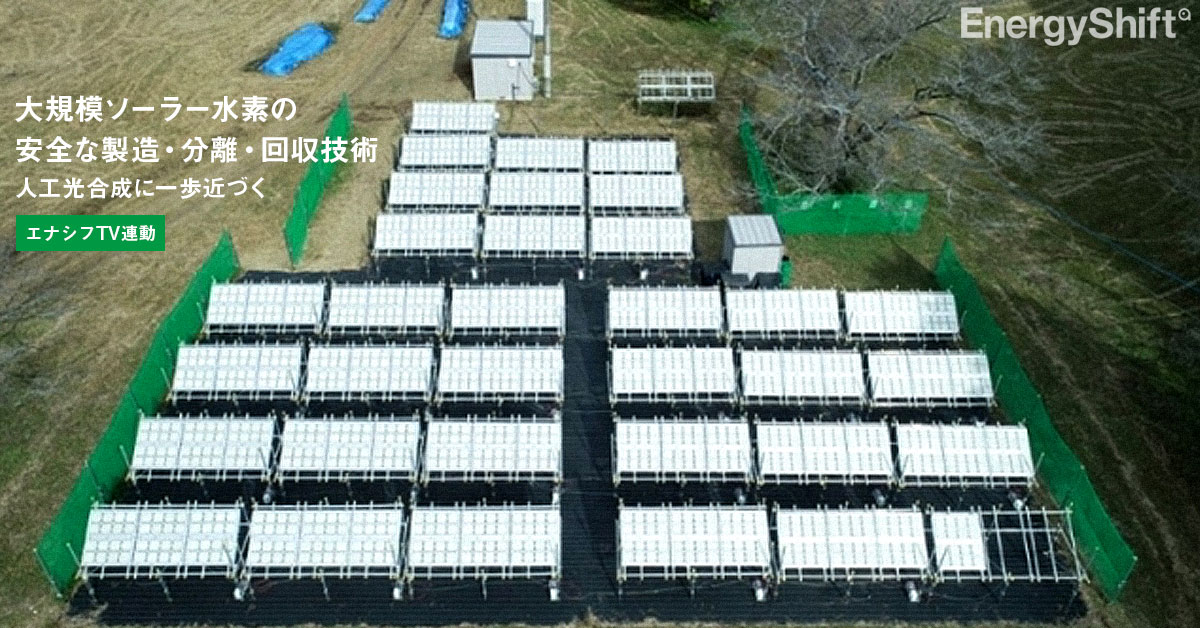
University of Tokyo: High-purity hydrogen extraction: Success with “photocatalyst”
-Utilization of the function of “photocatalyst”-
University of Tokyo
Shinshu University
NEDO
On a scale of 100 square meters,
For experiments to safely extract high-purity hydrogen
The research team was successful.
This August, it was announced in the international scientific journal “Nature”.
Hydrogen production in large quantities and at low cost:
We used a “photocatalyst” that decomposes water into hydrogen and oxygen by exposing it to sunlight.
It is expected as a result that will lead to technology for making in large quantities and at low cost.
This experiment:
Use a panel with a photocatalytic substance attached.
Place the panel outdoors and pour water.
It was generated in response to the sunlight,
From a gas that is a mixture of hydrogen and oxygen
By passing through a perforated membrane
Extract only hydrogen.
results of the experiment:
More than 70% of the generated hydrogen
With a high purity of about 94%
I was able to take it out safely.
It has been carried out for about two years since I was a kid.
University of Tokyo
Kazunari Dou, Special Professor
Such large-scale experiments were unprecedented in the world due to the danger of explosion.
We developed the device by considering a method that can be handled safely.
I want to put it to practical use as soon as possible and provide cheap hydrogen to the world.
What is a photocatalyst:
It is a substance that promotes the chemical reaction of surrounding substances when exposed to light.
As a typical substance, “titanium oxide” used in white paints and cosmetics is well known.
Environment | NHK News
https://www3.nhk.or.jp/news/html/20211017/k10013310361000.html
世界初!日本勢がソーラー水素の安全な製造と分離・回収技術を達成 人工光合成に一歩近づく | EnergyShift
https://energy-shift.com/news/28271049-d42d-4a8f-861a-0890f9e5f6ec
Photocatalytic solar hydrogen production from water on a 100-m2 scale
The most efficient solar hydrogen production schemes,
which couple solar cells to electrolysis systems, reach solar-to-hydrogen (STH) energy conversion efficiencies of 30% at a laboratory scale3.
Photocatalytic water splitting reaches notably lower conversion efficiencies of only around 1%,
but the system design is much simpler and cheaper and more amenable to scale-up1,2
provided the moist, stoichiometric hydrogen and oxygen product mixture can be handled safely in a field environment and the hydrogen recovered.
Extending our earlier demonstration of a 1-m2 panel reactor system based on a modified, aluminium-doped strontium titanate particulate photocatalyst4,
we here report safe operation of a 100-m2 array of panel reactors over several months with autonomous recovery of hydrogen from the moist gas product mixture using a commercial polyimide membrane5.
The system, optimized for safety and durability, and remaining undamaged on intentional ignition of recovered hydrogen, reaches a maximum STH of 0.76%.
While the hydrogen production is inefficient and energy negative overall,
our findings demonstrate that safe, large-scale photocatalytic water splitting, and gas collection and separation are possible.
To make the technology economically viable and practically useful,
essential next steps are reactor and process optimization to substantially reduce costs and improve STH efficiency, photocatalyst stability and gas separation efficiency.
Nature
https://www.nature.com/articles/s41586-021-03907-3
Hydrogen extracted from water on larger scale | NHK WORLD-JAPAN News
https://www3.nhk.or.jp/nhkworld/en/news/20211017_03/